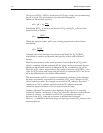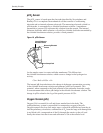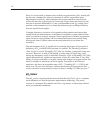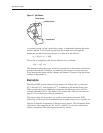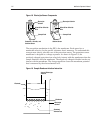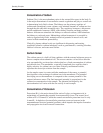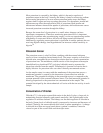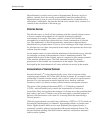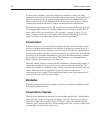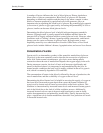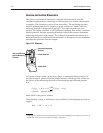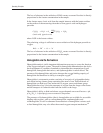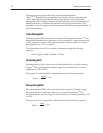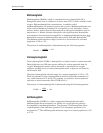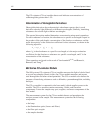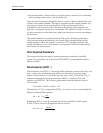
IĆ18 800 Series Operator's Manual
In critical care situations, especially where large amounts of blood are being
transferred, ionized calcium levels should be monitored closely. Transfused blood
typically contains citrate as an anticoagulant that can bind ionized calcium and
affect its level in the blood. Although total calcium levels may increase, ionized
calcium may decrease and lead to cardiac and neuromuscular malfunction.
When measuring ionized calcium, pH should also be measured. Because hydrogen
ions compete with calcium for calcium binding sites, a change in sample pH can
have a direct effect on calcium levels. For example, a change in pH of 0.1 can
cause a change in calcium of 0.2 mg/dL, which exceeds the span of the normal
range. Its effects, if not taken into account, are clearly significant.
20
Calcium Sensor
The calcium sensor is a half-cell that combines with the external reference sensor
to form a complete electrochemical cell capable of measuring calcium levels in a
blood sample. The sensor contains a silver and silver chloride wire surrounded by
an electrolyte solution that has a fixed concentration of calcium ions. A membrane,
consisting of an ionophore imbedded in a polyvinyl chloride membrane, separates
the electrolyte solution from the sample. The ionophore is a compound that is
highly selective for calcium ions over other ions.
When the sample comes in contact with the membrane of the measuring sensor, a
membrane potential develops as calcium ions interact with the membrane. This
membrane potential is compared to the constant potential of the external reference
sensor. The final measured potential is proportional to the calcium ion
concentration in the sample. The potential developed by the electrochemical cell
varies with the ion activity in each sample.
Metabolites
The 860 system analyzes blood samples for glucose and lactate in addition to pH,
blood gases, and electrolytes.
Concentration of Glucose
Glucose is the fundamental molecule in carbohydrate metabolism. Carbohydrates,
which provide a major food supply and energy source for the body, are broken
down into simple sugars such as glucose. Glucose is then absorbed through the
intestine, passes through the liver, and eventually enters the vascular system where
it reaches the cell level to be used as fuel.



